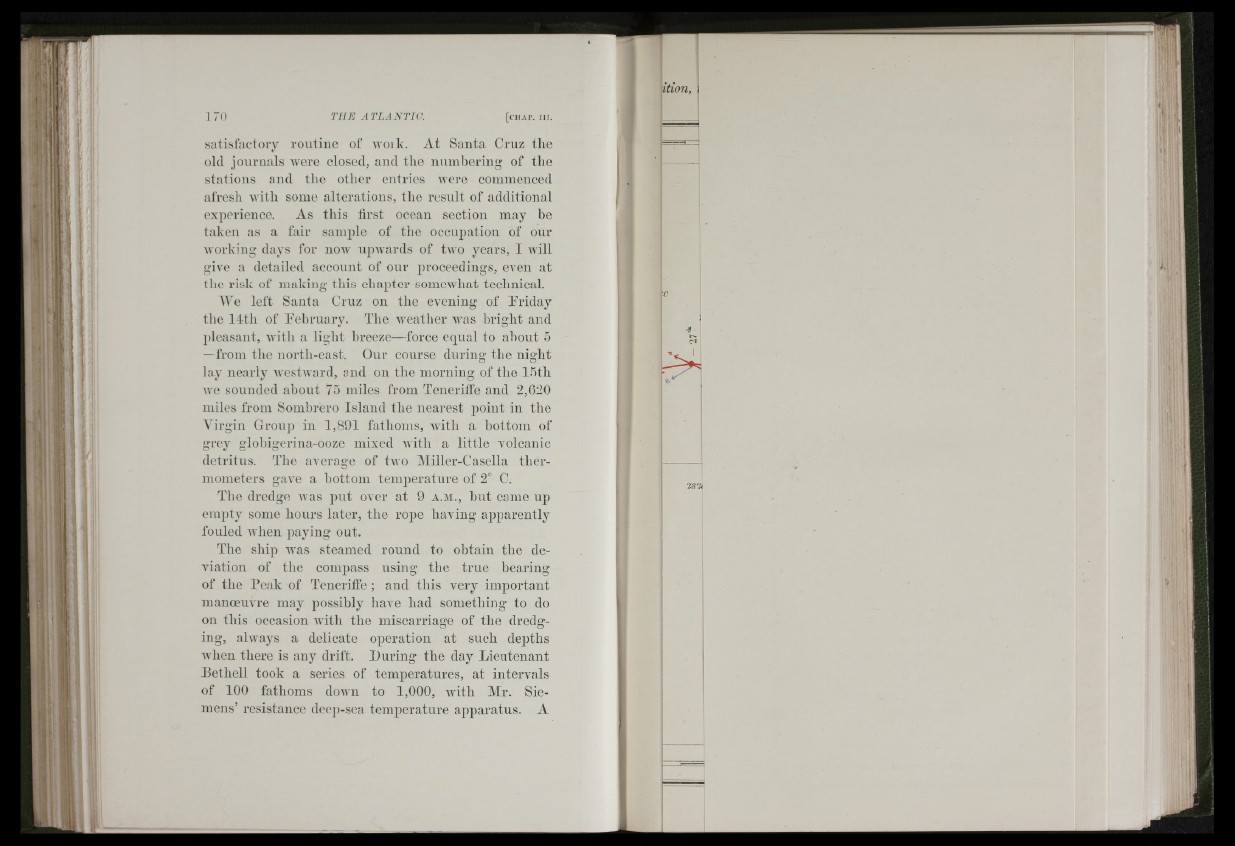
satisfactory routine of woik. At Santa Cruz the
old journals were closed, and the uumheriug of the
stations and the other entries were comineuced
afresh with some alterations, the result of additional
experience. As this first ocean section may be
taken as a fair sample of the occupation of our
working' days for now upwards of two years, I will
give a detailed account of our proceedings, even at
the risk of making tbis chapter somewhat tecbnical.
We left Santa Cruz on tbe evening of Eriday
tbe 14th of Eebruary. The weather was bright and
jileasaut, witli a light breeze—force equal to about 5
— from the north-east. Our course during tbe night
lay nearly ivestivard, and on the morning of the 15tli
we sounded about 75 miles from Teueriffe and 2,620
miles from Sombrero Island the nearest point in the
Virgin Groiiji iu 1,891 fathoms, with a bottom of
grey globigeriiia-ooze mixed ivith a little volcanic
detritus. The average of two Miller-Casella thermometers
gave a bottom temperature of 2° C.
The dredge was put over at 9 a.m., but came up
empty some hours later, the rope having apparently
fouled wlien paying out.
The ship was steamed round to obtain the deviation
of the compass using the true bearing
of the Peak of Teneriffe ; and this very important
manoeuvre may possibly have bad something to do
on tbis occasion with the miscarriage of the dredging,
always a delicate operation at such depths
when there is any drift. Euriug tbe day Lieuteuant
Pethell took a series of temperatures, at intervals
of 100 fathoms down to 1,000, with Mr. Siemens’
resistance deep-sea temperature apparatus. A
ition,
-5 -
(N
’K ... \ ‘
¡ill':